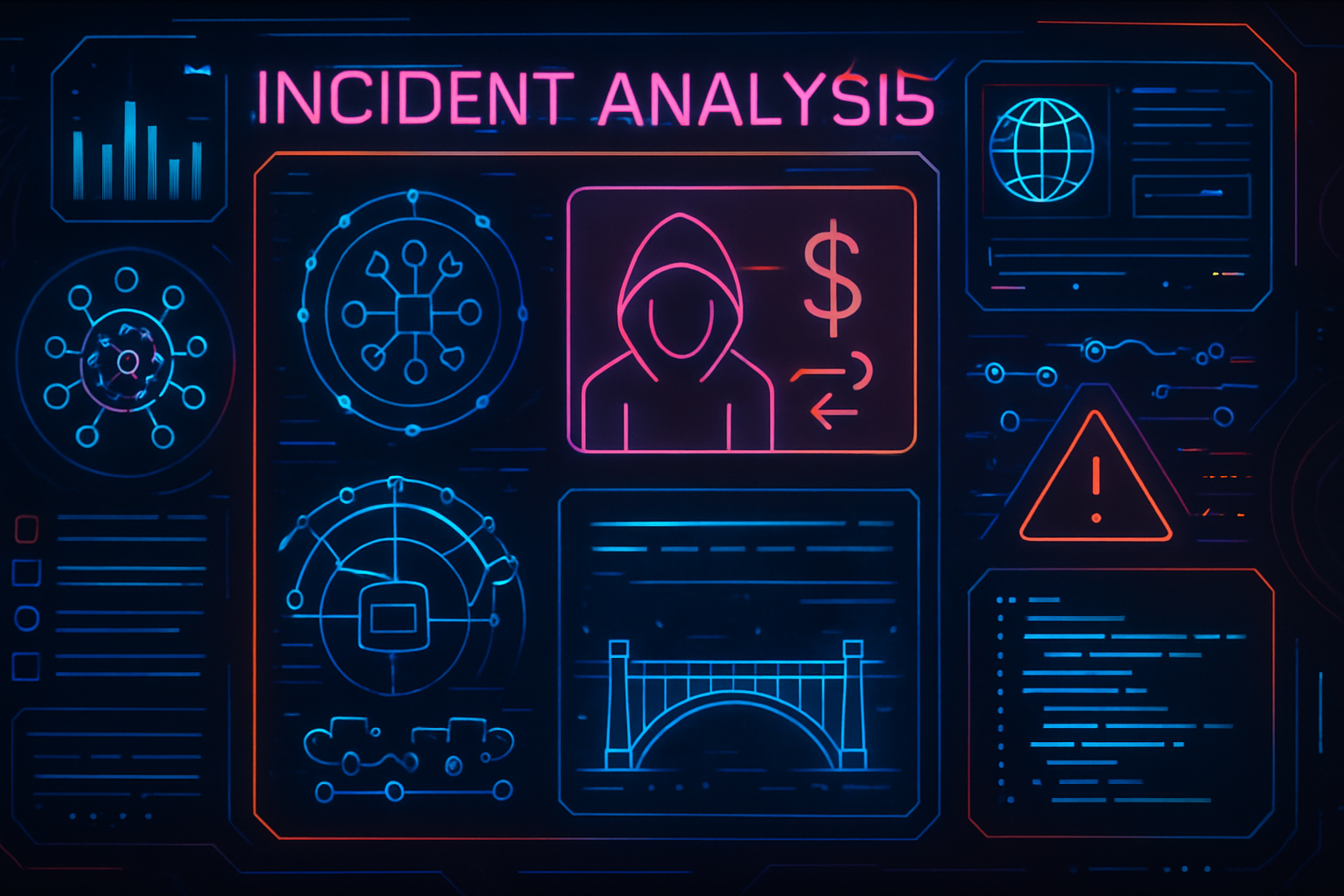
Cross-chain bridges have become the backbone of blockchain interoperability, allowing assets and data to flow seamlessly between networks. But with great connectivity comes great risk. In recent years, cross-chain bridge exploits have accounted for more than half of all value lost in DeFi, underscoring a critical need for robust security practices and deeper incident analysis. Two major incidents – the Ronin Bridge exploit and the Nomad Bridge hack – illustrate not only the technical vulnerabilities at play but also the essential lessons for anyone building or using cross-chain protocols.

Ronin Bridge Exploit: The Cost of Centralized Validators
In March 2022, the Ronin Network bridge, which powers Axie Infinity, suffered a devastating $625 million loss. Attackers managed to compromise private keys controlling five out of nine validator nodes. With majority control, they forged fraudulent withdrawals and siphoned hundreds of millions in user funds. This incident quickly became infamous as one of the largest crypto thefts in history.
So how did this happen? The root cause was a classic case of centralized control points. By relying on just nine validators – with five needed to approve transactions – Ronin inadvertently created a single point of failure. Once attackers gained access to those keys (through social engineering or infrastructure compromise), they effectively owned the bridge.
The key lesson here is clear: validator decentralization and robust multi-signature schemes are non-negotiable. Bridges must avoid concentrated authority; distributing validators across independent entities dramatically lowers the risk that any single compromise can lead to catastrophic failure. Equally important is operational security around private keys – storing them in secure hardware modules and enforcing strict access controls is essential.
Nomad Bridge Hack: Smart Contract Bugs Have Expensive Consequences
The Nomad Bridge hack in August 2022 showcased another persistent threat: smart contract vulnerabilities. After an upgrade introduced a subtle bug in its message verification logic, Nomad became vulnerable to anyone spoofing messages and draining funds. The exploit was so simple that dozens of attackers copied it within hours, leading to over $190 million lost almost overnight.
This incident highlights how even minor code changes can introduce catastrophic risks if not thoroughly tested. The vulnerability went undetected because it slipped through code review and audit processes after an upgrade – a stark reminder that formal verification and rigorous auditing are essential for every release cycle.
Major Bridge Exploits and Security Lessons Learned
-

Ronin Bridge Exploit (March 2022): The Ronin Network, which powers Axie Infinity, suffered a $625 million loss after attackers compromised validator private keys. By gaining control of five out of nine validators, the attackers were able to forge withdrawals and drain funds.Lesson: Validator decentralization and robust multi-signature security are vital. Bridges must avoid central points of failure and enforce strict key management practices to prevent similar breaches.
-

Nomad Bridge Hack (August 2022): Nomad lost over $190 million when a smart contract upgrade introduced a vulnerability allowing anyone to spoof messages and withdraw funds. The exploit’s simplicity led to it being widely copied by multiple attackers.Lesson: Rigorous auditing and formal verification of bridge smart contracts are essential. Even minor code changes can introduce catastrophic vulnerabilities if not thoroughly tested.
What These Incidents Reveal About Cross-Chain Security
Together, these two incidents underscore recurring themes in cross-chain bridge exploits:
- Avoid central points of failure: Decentralize validator sets as much as possible.
- Enforce strong key management: Use secure custody solutions and multi-signature wallets.
- Treat every code change as critical: Audit all upgrades thoroughly; never skip formal verification for smart contracts.
- Monitor actively: Real-time monitoring could have detected these attacks sooner, minimizing losses.
If you’re interested in a deeper dive into how these vulnerabilities were exploited across multiple bridges, check out this comprehensive analysis from Chainlink’s education hub on cross-chain bridge vulnerabilities.
As the cross-chain ecosystem matures, these high-profile exploits are shaping both industry standards and community expectations. The Ronin and Nomad incidents aren’t outliers, they’re case studies in what can go wrong when fundamental security principles are overlooked. It’s not just about patching bugs after the fact; it’s about building a culture of proactive defense and transparency from day one.
Let’s break down the actionable insights that every protocol team, security researcher, and DeFi user should take away:
Major Cross-Chain Bridge Exploits & Lessons Learned
-

Ronin Bridge Exploit (March 2022): The Ronin Network, which powers Axie Infinity, suffered a $625 million loss after attackers compromised validator private keys. By gaining control of five out of nine validators, they were able to forge withdrawals and drain funds.Lesson: Validator decentralization and multi-signature security are critical. Bridges must avoid central points of failure and enforce robust key management practices.
-

Nomad Bridge Hack (August 2022): Nomad lost over $190 million when a smart contract upgrade introduced a vulnerability allowing anyone to spoof messages and drain funds. The exploit’s simplicity meant it was rapidly copied by multiple attackers.Lesson: Rigorous auditing and formal verification of bridge smart contracts are essential. Even minor code changes can introduce catastrophic vulnerabilities if not thoroughly tested.
Moving Forward: Building Safer Bridges
So what does a resilient cross-chain future look like? First, decentralization must be more than a buzzword, it needs to be reflected in validator architecture, governance, and operational processes. The Ronin exploit proved that even trusted teams can fall victim if too much power is concentrated in too few hands. Protocols should strive for validator diversity, ideally involving independent organizations with strong reputations and distinct infrastructure setups.
Second, smart contract security is never “done. ” The Nomad hack exposed how even minor logic errors or rushed upgrades can have devastating consequences. Continuous integration pipelines should include automated formal verification tools alongside manual code review and third-party audits. No upgrade should ever go live without passing through multiple layers of scrutiny.
Third, real-time monitoring isn’t optional anymore. Threat actors move quickly, protocol defenders need to move faster. Modern bridges should integrate anomaly detection systems capable of flagging suspicious withdrawals or sudden changes in validator behavior. Rapid response features like circuit breakers or pause functions can buy time during an attack, limiting losses while a fix is deployed.
Community Vigilance and Ongoing Education
Finally, these lessons aren’t just for developers, end users also play a role by demanding transparency and choosing protocols with proven security track records. Community-driven risk scanners and open audit reports empower everyone to make informed decisions about where to bridge assets.
The bottom line? Cross-chain bridges will remain lucrative targets for attackers as long as they hold significant value. But by learning from incidents like Ronin and Nomad, and refusing to compromise on decentralization, key management, code quality, or monitoring, the industry can turn painful lessons into lasting resilience.






